I'm using visual studio 2013. The company I work for has changed domain names (eg from abc.com to ayebecee.com) which obviously means that a new login profile has to be created etc. Now I started up visual studio but all the addons I installed and settings are 'gone'. Basically I need to know where the settings and addons are stored so that I can copy them to my new windows profile.
- 13,221
- 9
- 64
- 84
- 7,206
- 15
- 53
- 95
-
Did you take a look at this? http://msdn.microsoft.com/en-us/library/19dax6cz.aspx – Spock Jul 30 '14 at 12:54
-
Is posible, actually, to save these settings online, in Visual Studio Profile? – Dani Nov 06 '17 at 08:31
7 Answers
**Update for latest version**
Visual Studio 2015:
%USERPROFILE%\Documents\Visual Studio 2015
Visual Studio 2017:
%USERPROFILE%\Documents\Visual Studio 2017
Also have a look at these folders:
%USERPROFILE%\AppData\Local\Microsoft\VisualStudio\...
%USERPROFILE%\AppData\Roaming\Microsoft\VisualStudio\...
- 15,079
- 5
- 45
- 61
-
3VS2017 can also be found in 'Documents': `%USERPROFILE%\Documents\Visual Studio 2017`. – GWigWam Feb 02 '18 at 09:42
-
1@GWigWam No, it's not there for VS 2017. Many folders but most are empty. No settings. No extensions. – ygoe Nov 23 '18 at 11:01
-
-
I have also looked at other locations and did find something, but part of it not in a readable format. So manipulating the settings outside of VS in a way that fixes the import/export bugs is not possible. – ygoe Nov 25 '18 at 14:33
Try copying the files over from the old profile in the following locations to your new username's profile:
From:
C:\Users\[OldUSERNAME]\AppData\Roaming\Microsoft\VisualStudio
To:
C:\Users\[NewUSERNAME]\AppData\Roaming\Microsoft\VisualStudio
From:
C:\Users\[OldUSERNAME]\AppData\Local\Microsoft\VisualStudio
To:
C:\Users\[NewUSERNAME]\AppData\Local\Microsoft\VisualStudio
- 4,522
- 1
- 31
- 37
On my PC, the settings for Visual Studio 2019 build 16.9.05 are stored in two files:
C:\Users\YourUserID\AppData\Local\Microsoft\VisualStudio\16.0_c830c69b\Settings\CurrentSettings.vssettings
C:\Users\YourUserID\AppData\Local\Microsoft\VisualStudio\16.0_c830c69b\privateregistry.bin
The exact paths may vary.
The .vssettings file is an XML file (though not necessarily well-formed).
The bin file can be loaded into Regedit as a hive under a temporary sub-key (click on HKEY_LOCAL_MACHINE first; also, you may have to exit Visual Studio).
A script can load this bin file as a hive using reg.exe LOAD HKLM\TempHive "path-to-bin-file". You can then query it with reg.exe QUERY HKLM\TempHive\Software\Microsoft\VisualStudio (and similar commands), followed by REG UNLOAD HKLM\TempHive.
- 994
- 11
- 18
Make an Export of your Visual Studio Settings... Tools -> Import And Export Settings Afterwards you can import it to your VS where you want have this settings.
- 369
- 4
- 16
Visual Studio 2022 Settings File
On Windows computers, below is the location of the Microsoft Visual Studio 2022 XML-based Settings File. Note "17.x" is a unique number for you and whatever version of Visual Studio you are using. A "16.x" is Visual Studio 2019, for example:
C:\Users\{username}\AppData\Local\Microsoft\VisualStudio\17.x\
Settings\CurrentSettings.vssettings
This is where most (not all) all the settings connected to your Visual Studio 2022 IDE will appear. Of course, each project has a variety of other settings files.
Note: Do NOT try and manipulate this file but use the Visual Studio IDE instead under Tools > Options...
Because Visual Studio constantly writes over these files with new settings, I like to create a master backup in a completely different folder which I manually update with current settings file settings. I also save these VS settings inside projects if I manage projects with different settings. Example, you do not need lots of JavaScript linting and code analysis for certain WebAPI projects, etc.
To save or "export" a copy of this settings file to a new folder as backup, just open up Visual Studio 2022 and click Tools > Import and Export Settings...
Choose the export option and save your file where you like. Note that saving a settings file is NOT creating a the new location of Visual Studio settings file that the program uses, but only a COPY of the settings file.
- 12,444
- 2
- 35
- 23
It's easy to miss some:
%USERPROFILE%\Documents\Visual Studio 2022
%USERPROFILE%\Documents\Visual Studio 2019
%USERPROFILE%\Documents\Visual Studio 2017
%USERPROFILE%\Documents\Visual Studio 2015
%USERPROFILE%\AppData\Roaming\Microsoft\VisualStudio
%USERPROFILE%\AppData\Roaming\Microsoft Visual Studio
%USERPROFILE%\AppData\Local\Microsoft\VisualStudio
%USERPROFILE%\AppData\Local\Microsoft\VisualStudio Services
%USERPROFILE%\AppData\Local\Microsoft\VSCommon
%USERPROFILE%\AppData\Local\Microsoft\VSApplicationInsight
- 2,724
- 1
- 23
- 53
-
Visual Studio 2019+ doesn't appear to be storing settings in **%USERPROFILE%\Documents\Visual Studio 2019** or **%USERPROFILE%\Documents\Visual Studio 2022**, most likely due to _cloud settings sync._ – Aug 31 '22 at 02:40
ADDING 2022
In my case, I am using VS 2010 ultimate and as you know VS displays Memory Leak information in 'Output Window' by default.
But suddenly (I don't know actually since when) stopped to display that info (even if I am seeing leakage).
2days struggled by uninstalling/reinstalling VS without any success..
And finally today I solved by doing different approach:
Used other Visual Studio 2010 ultimate settings in other computer
- Comp 1(which has 'working VS' as expected):
open Visual Studio >> Tool >> Import and export settings >> Export selected preferences >> Next >> selectPathToDownIn >> finish --> current VS setting is downloaded
Send current downloaded setting file to Comp 2(which has 'not working VS' as expected)
Comp 2:
open Visual Studio >> Tool >> Import and export settings >>
select No, import the new settings and overwrite the current settings >> selectDownloaded setting files from Comp1 >> next >> finish
Ref: I did it by referencing from this link(page is in Korean)
Note: names given here might be bit different (used Google translate)
- 99
- 5
